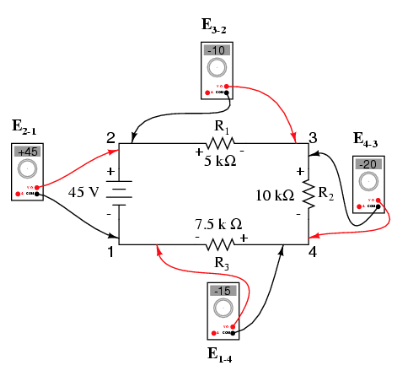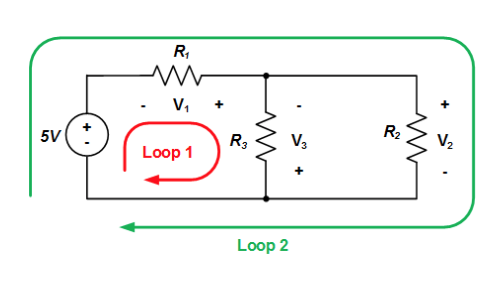9.3 Ohm’s Law, Kirchhoff’s Loop Rule (Resistors in Series and Parallel)
2 min read•june 18, 2024
Peter Apps
AP Physics 1 🎡
257 resourcesSee Units
As of 2021, College Board only tests Units 1-7 on the AP Physics 1 exam. This page's content will not be tested on the exam, but we kept it online for you all as a resource.
Enduring Understanding 5.B
The energy of a system is conserved.
Essential Knowledge 5.B.9
Kirchhoff’s loop rule describes the conservation of energy in electrical circuits.
- Energy changes in simple electrical circuits are conveniently represented in terms of energy change per charge moving through a battery and a resistor.
- Since electric potential difference times the charge is energy, and energy is conserved, the sum of the potential differences around any closed loop must add to zero.
- The electric potential difference across a resistor is given by the product of the current and the resistance.
- The rate at which energy is transferred from a resistor is equal to the product of the electric potential difference across the resistor and the current through the resistor.
Kirchhoff’s Voltage Law is used when we’re trying to analyze the current, voltage and resistance of a circuit. The law simply states that if you have a loop in a circuit, the total voltage drop across the components and voltage source must equal 0. (Oftentimes, I’ll reword this to say that the voltage drops of the components must equal the voltage of the source).
The cause of this is when we look at the entire circuit as a system, energy must be conserved. All of the electrical energy provided by the battery is given to the electrons (and represented as voltage). As the electrons do work in the other components, the energy is transferred to the components and the voltage must decrease. When the electrons reach the battery again, they have completed the loop and given all their energy away.
Examples:




🎥Watch: AP Physics 1 - Unit 9 Streams
Browse Study Guides By Unit
👟Unit 1 – Kinematics
🌀Unit 2 – Dynamics
🚀Unit 3 – Circular Motion & Gravitation
⚡️Unit 4 – Energy
⛳️Unit 5 – Momentum
🎸Unit 6 – Simple Harmonic Motion
🎡Unit 7 – Torque & Rotational Motion
💡Unit 8 – Electric Charges & Electric Force
🔋Unit 9 – DC Circuits
🔊Unit 10 – Mechanical Waves & Sound
📚Study Tools
🧐Exam Skills

Fiveable
Resources
© 2025 Fiveable Inc. All rights reserved.